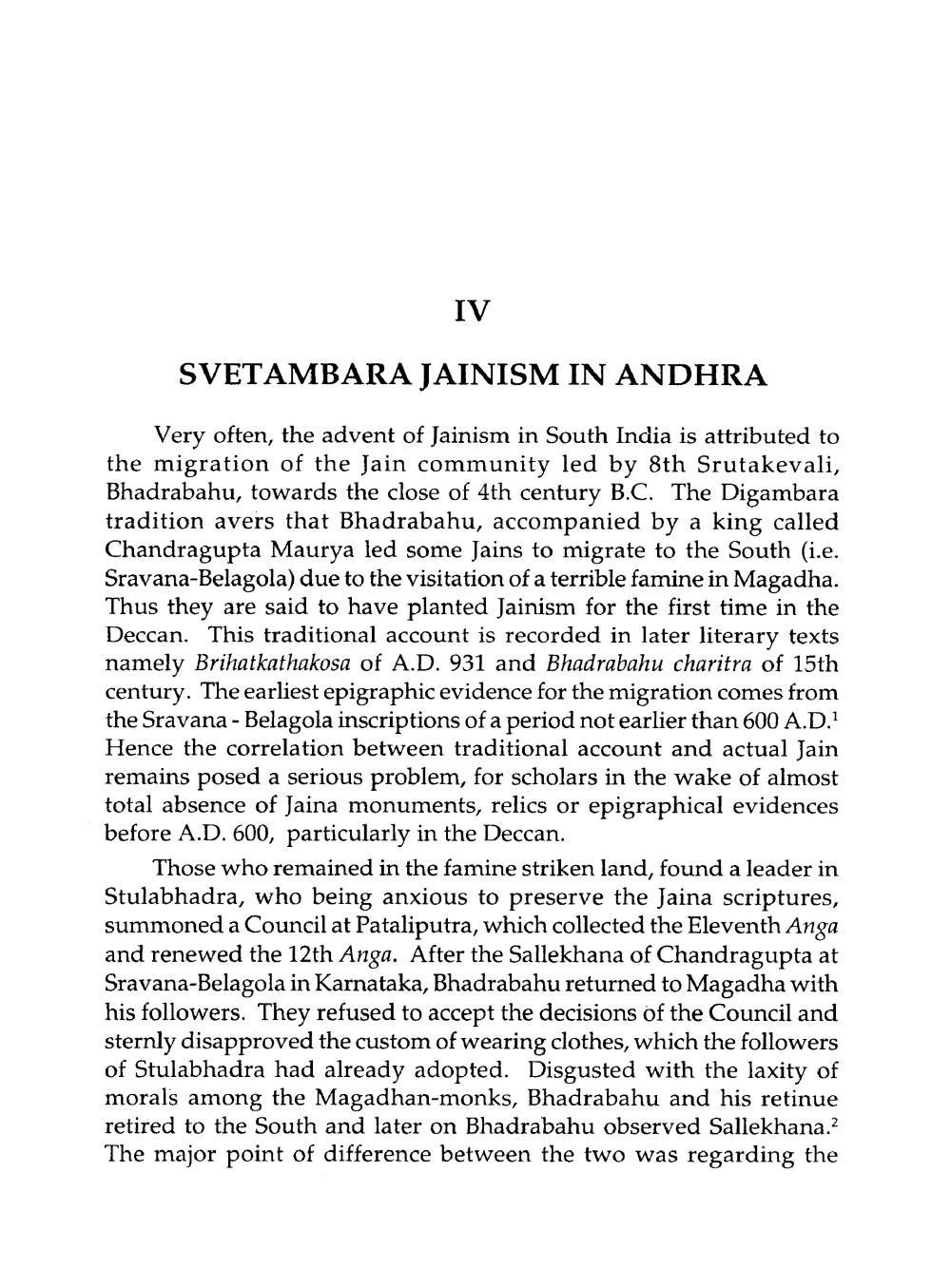________________
IV
SVETAMBARA JAINISM IN ANDHRA
Very often, the advent of Jainism in South India is attributed to the migration of the Jain community led by 8th Srutakevali, Bhadrabahu, towards the close of 4th century B.C. The Digambara tradition avers that Bhadrabahu, accompanied by a king called Chandragupta Maurya led some Jains to migrate to the South (i.e. Sravana-Belagola) due to the visitation of a terrible famine in Magadha. Thus they are said to have planted Jainism for the first time in the Deccan. This traditional account is recorded in later literary texts namely Brihatkathakosa of A.D. 931 and Bhadrabahu charitra of 15th century. The earliest epigraphic evidence for the migration comes from the Sravana - Belagola inscriptions of a period not earlier than 600 A.D. Hence the correlation between traditional account and actual Jain remains posed a serious problem, for scholars in the wake of almost total absence of Jaina monuments, relics or epigraphical evidences before A.D. 600, particularly in the Deccan.
Those who remained in the famine striken land, found a leader in Stulabhadra, who being anxious to preserve the Jaina scriptures, summoned a Council at Pataliputra, which collected the Eleventh Anga and renewed the 12th Anga. After the Sallekhana of Chandragupta at Sravana-Belagola in Karnataka, Bhadrabahu returned to Magadha with his followers. They refused to accept the decisions of the Council and sternly disapproved the custom of wearing clothes, which the followers of Stulabhadra had already adopted. Disgusted with the laxity of morals among the Magadhan-monks, Bhadrabahu and his retinue retired to the South and later on Bhadrabahu observed Sallekhana.? The major point of difference between the two was regarding the




